| Organics Auckland |
| Field Trip 26 May 2001 |
| Viv and Nancy Milne have 20 acres of orchard in the middle of dairy country on Port Waikato Road near Tuakau, New Zealand. |
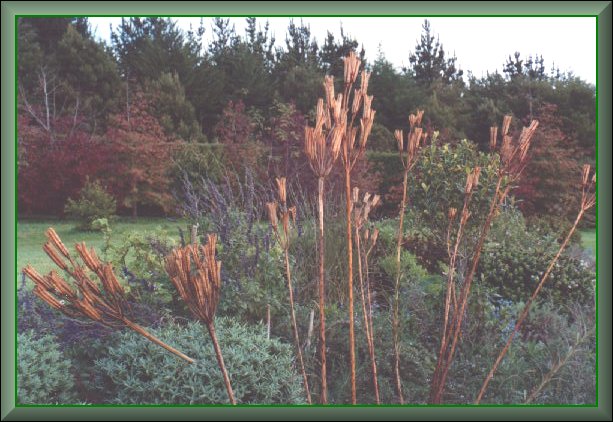 |
| We walked around the sheltered areas that were tidy and well cared for. We saw tangelos varieties of pears, apples and Cheramoyas. |
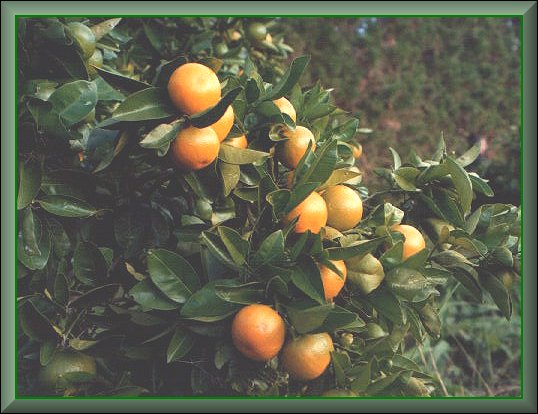 |
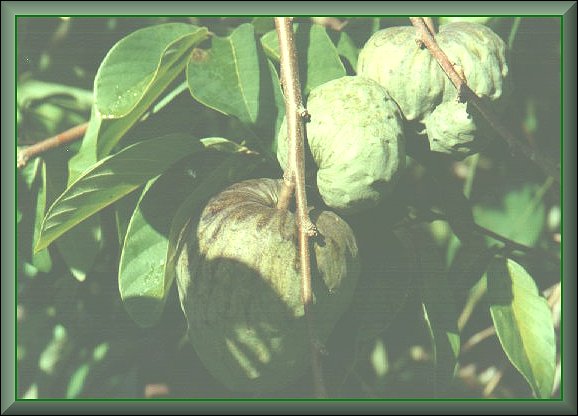 |
| Between the rows of fruit trees were planted herbs in the sward - comfrey and nasturtium between the tangelos; the comfrey was useful for bringing up nutrients and for dying back to a rich mulch in the Winter. |
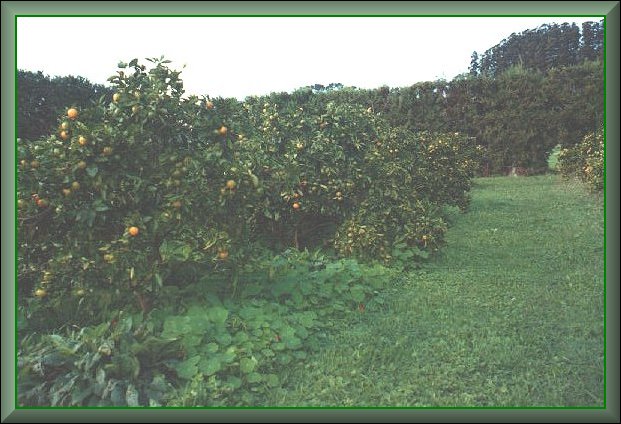 |
| In between
the pears and apples was planted rosemary and lavender and Jerusalem artichokes
to give a variety of pollinators over the Summer with plantain to help
keep the leaf roller caterpillar numbers down. Viv said that he had
no pests or diseases in his tangelos; neither scale nor the native borer
because the ladybird population would deal to the scale and he prevented
the borer gaining access to the trees by pruning off the spent twigs after
fruiting.For his apple and pears he used pheramone twist ties to confuse
the codlin moth male moths so that they didn’t mate with the female moths-
this stopped the life-cycle and means that there are no caterpillars in
the apples. Viv was working on a spray to discourage bronze beetle – he
had collected the beetles with a butterfly net and is in the process of
having the beetle made into a biodynamic pepper spray. Viv does a dormant
spray of Lime sulphur and uses Kumulus sulphur after fruit-set to prevent
black spot and powdery mildew in apples. He also does foliar spraying of
seaweed to discourage fungus.
He uses a fish foliar spray for feeding the trees nutrients. All the trees were mulched with compost, which was made up in the main, of grass clippings from mowing between the tree rows and tree clippings from trimming the shelter belt trees which were largely Pinus Radiata all picked up with a silerator. We saw the long compost heaps that he had just turned. Viv said that because of the difficulty of getting certified organic chook manure his present heap had no nitrogen input apart from horse manure. He used Basalt sands rock dust and lime and Dolomite in the heaps too. We looked at his worm farm. From this he collects worm castes and the liquid that rains off and strains these and mixes these into his foliar sprays. |
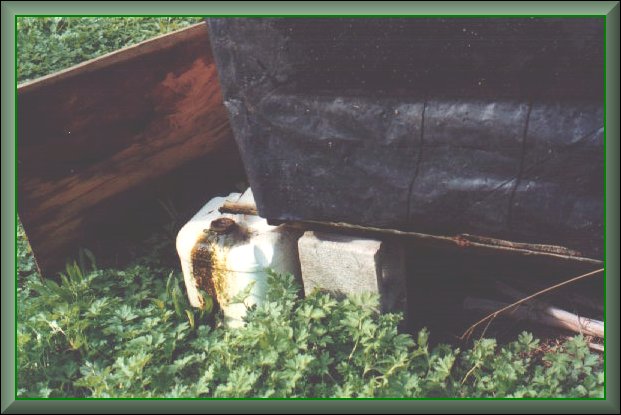 |
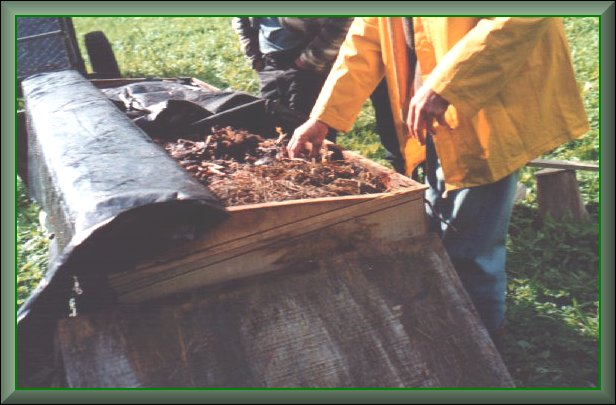 |
| The two Cheramoya orchards were his pride and joy because they had needed such care to get the present trees to adult size, past the frost–tender youthful stage. Even getting a successful pollination was a feat in itself - as away from its' natural habitat in South America, Cheramoyas do not have their natural pollinator and so need pollinating by hand which you have to do thoroughly to get well-shaped fruit. |
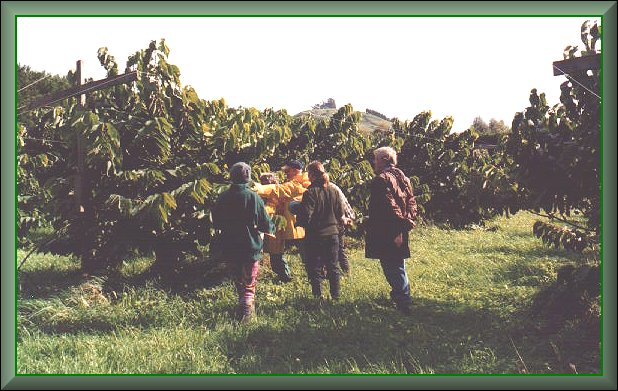 |
| In a higher
area we looked at tamarillos and bananas and Chinese quince.
A couple
more points of interest :
He was doing
trials in macadamias, figs, guava, passion fruit, avocado, plums, walnut
and some Tree Crop Ass. Trials such as :
Viv is very handy with his grafting and there was a suggestion that we do a grafting workshop for those who are interested. |
| Email Viv : milne@ps.gen.nz |
| . |
| . |
| Auckland small growers who are interested in getting their Organic status certificate can contact Brendan Hoare for details. |
| Email Brendan : bhoare@unitec.ac.nz |